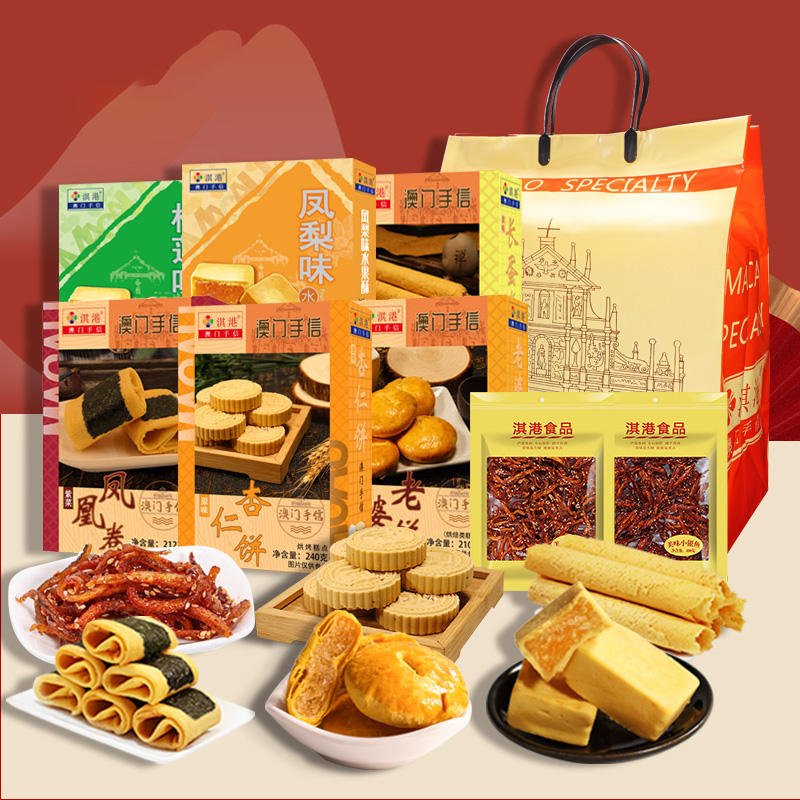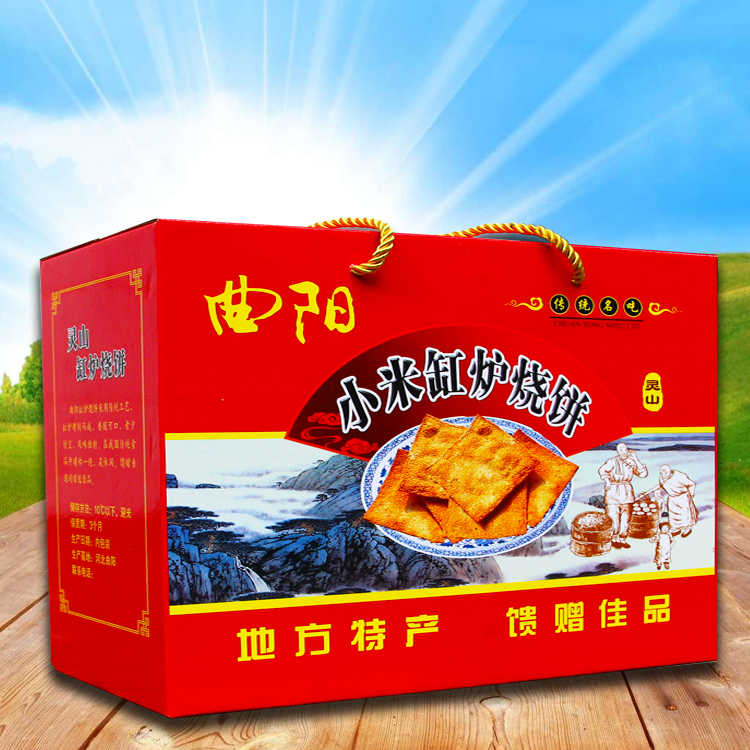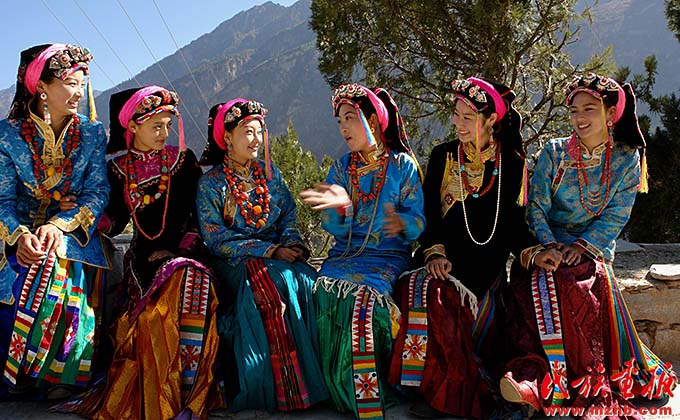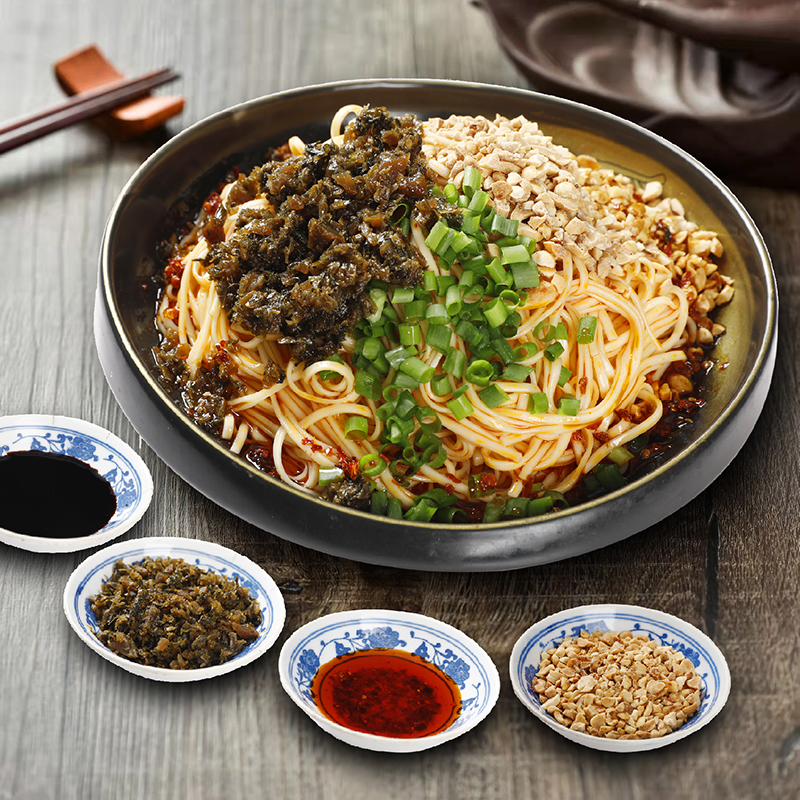去古巴旅游吃什么 古巴美食攻略
古巴是一颗伫立在“加勒比海旁的明珠”,这是一个美丽的历史悠久的国家。古巴人民更是一个爱好享受一切快乐的民族,所以古巴的的美食也一定有着悠久的历史和传统的风格。所以去古巴旅游,可别错过品尝古巴的特色美食的机会。今天带来了古巴美食攻略,一起来了解下去古巴旅游吃什么吧~
冰淇淋
被一些媒体评为世界十大冰淇淋的Coppelia,可以说是古巴的国家冰淇淋,在古巴各大城市都有分店,哈瓦那的Coppelia冰淇淋位于 Vedado区,实际品尝后感觉这里的热带水果冰淇淋还不错,但也不能抱有高的期望值,但这里是面向老百姓的国营店,可以用CUP支付,只要花不到一个CUC的钱,就可以买好几份,体验和哈瓦那老 百姓一起排队,一起享用冰淇淋的乐趣。
阿加克高汤
阿加克高汤是古巴菜中的珍宝,这是一道可以由任意蔬菜、薯类和肉类搭配而熬成的粘稠的汤,一般而言,普通人家常见的就是把土豆,胡萝卜、红薯或木薯、鸡肉块或猪肉块以及牛油果混合顿成一锅,佐料也只需要放盐就好。
古巴汉堡
古巴汉堡(弗里塔)Frita可以看作是古巴汉堡,上面有厚厚的牛肉馅饼,上面有各种口味的酱汁,尤其是细长的薯条。此外,还可以添加丰富的配料,如煎蛋、牛肉屑等,以满足食品爱好者的不同需求。
朗姆酒
古巴朗姆酒,是古巴人的一种传统饮料,古巴朗姆酒是由酿酒大师把作为原料的甘蔗蜜糖制得的甘蔗烧酒装进白色的橡木桶,之后经过多年的精心酿制,使其产生一股独特的,无与伦比的口味,从而成为古巴人喜欢喝的一种饮料,并且在国际市场上获得了广泛的欢迎。朗姆酒属于天然产品,由制糖甘蔗加工而成。整个生产过程从对原料的精心挑选起,随后生产中酒精的蒸馏,甘蔗烧酒的陈酿,把关都极其严格。
烤玉米
在国内我们最常吃的烤玉米是用盐和胡椒调味,但是古巴的玉米在烤好之后,首先在装满奶酪粉的盘子里烘焙,上面有一层“糊”,然后撒上辣椒粉等香料,最后滴上柠檬汁以丰富口感。
Mojo酱
古巴的Mojo酱是传统菜的特色所在,这东西在拉美比较流行,是一种由橙汁、柚子汁、醋、盐、蒜泥、洋葱汁、黑胡椒碎末和香叶末调制而成酸中带咸的酱汁,腌肉炒菜都用它。到古巴旅游时,如果你准备尝尝地道的古巴美食,相信你不会错过Mojo酱。
海鲜烩饭
海鲜烩饭,虽然西班牙长期以来被视为蒸米的发源地,但古巴也有自己的蒸米,有鸡肉、贻贝、香肠、虾、扇贝和龙虾。在古巴,只有高端餐厅可以吃到正宗的海鲜饭,因为藏红花是一种稀有的当地调味品,而且海鲜和大米对原材料的要求更高。
炸大蕉
国内有炸香蕉,切成小片挂上甜面糊以后,下到油锅中炸香,起锅淋上炼乳,非常甜腻。古巴也有类似吃法,不过炸的是芭蕉,又被称为大蕉,比香蕉略小,口感更硬更涩一些,炸出来却比香蕉好吃。炸芭蕉在古巴街头有许多不同的做法,可谓是古巴国民小吃。
烤龙虾
古巴是全球龙虾的主要产出国之一。烤龙虾是古巴当地很受欢迎的美食。你可能吃过香辣小龙虾,吃过红烧龙虾,但是你一定没有吃过烤过的龙虾。古巴的烤龙虾配上当地特制的调味料,别提有多美味。古巴龙虾的味道虽不及澳龙,但胜在性价比,十分便宜。去古巴旅游的你不要错过。
以上就是带来的古巴美食攻略,不知道去去古巴旅游吃什么的朋友可以参考下~到古巴旅游,如同欣赏探戈、伦巴等拉美风格的音乐一样令人陶醉,希望古巴的美食也能让你陶醉其中~
重庆到古巴旅游/xianlu/guba
古巴的美食有哪些
古巴人民是一个爱好享受一切快乐的民族,去古巴旅游,可别错过品尝古巴的烤龙虾、圣地亚哥的烤乳猪和科佩里亚得冰淇凌。几个世纪以来,古巴形成了自己独特的烹饪和甜食制作方法。正如古巴著名诗人尼古拉斯?纪廉所写:“混血、混血,一切都被同化……”色、香、味俱全的古巴烹饪和甜食向古巴民族的形成一样,可谓集诸民族之大成而又独具自己的特色。
但是加利西亚和阿斯图利亚烹饪的浓味汤汁、生猛海鲜,都是古巴人十分喜爱的佳肴。塞事的烹饪引进到热带的古巴,深深扎根在民间生活中,在炎热的盛署品尝寒冷地区的佳肴,不得不敞开衬衣,扇着扇子,真是别有一番情趣。
古巴传统的美食是菜豆猪肉米饭。在古巴最为大众喜爱的肉是猪肉。此外,古巴人也喜欢味道不错的腌肉、油炸猪肉皮或油炸牛肉、羊杂碎和羔羊肉。最典型的土生土长古巴人的美食风味是炸鸡伴洋葱和土豆、卤汁鲑鳟鲁伴洋葱和土豆,肚里填满大米和黑豆的火鸡、红烧鲷或鲑鳟鲁外加洋葱和土豆、黄米饭炒干虾,油炸猪脑、芋头、南瓜和嫩甜玉米……在古巴圣诞节晚餐上有烤肉串、火鸡或卡塔鲁尼亚式红烧鲷鲁,外加油炸芭蕉和红润的烤乳猪肉,或者木薯拌蒜泥。
每逢星期日……鸡烧米饭,上面洒上黑胡椒,还有冷拌西红柿、蔬菜和黄瓜色拉。古巴烹饪也因地区不同而各种多样。例如,沿海地区渔村的佳肴,一切都以鱼为主,有旗鱼或鲑鳟鱼,还有巴拉科亚的微型“特蒂”。
在哈瓦那城里炎热的傍晚,街上有叫卖桂皮或可可煮白薯,多数嘴里只剩两颗牙的老人最爱吃。
古巴是世界糖罐,古巴人爱吃甜食。古巴的甜食制品丰富多彩。在乡村和小镇有木薯和面粉制成的圣诞油煎糕点、库苏维甜糕、巴拉拉维亚甜食、涂蜂蜜的小三角面包、牛奶拦嫩甜玉米、西蕃莲甜食、甜牛奶食品、多种多样糖渍水果、冬瓜和哥可甜食……西番莲或糖渍西番莲伴奶酷,木瓜或柚子皮甜食伴黄奶酷,什么也无法和这些相比,没有比这些更美味的了!
西班牙的炸牛奶鸡蛋面包片和古巴的牛奶鸡蛋面包片、糖渍柚子皮拌桂皮粉等,也是人们爱好的甜食。
亚非拉三大洲的白人、黑人和黄种人的双手把古巴的烹饪发展成最可口的美食文化。西班牙伊比利亚文化的小锅汤,非洲的佐料与冷拌苋菜、马齿苋和糖萝卜;中国美味的糖醋鱼和肉、糯米食品和种植在郊外菜园里品种繁多的大量蔬菜……都成为了古巴美食文化的有机组成部分。阿希亚科汤菜是典型的渗透文化的美食,是古巴美食的象征。民间最常见的土豆,胡萝卜和鸡肉或者猪肉,再加上油梨就是上佳的阿西亚科。据传说,吃了阿西亚科可以驱除邪恶。
加利西亚和阿斯图利亚的浓味汤,是古巴人十分喜爱的佳肴。古巴传统的美食是菜豆猪肉米饭。在古巴最为大众喜爱的肉是猪肉。此外,古巴也喜欢味道不错的腌肉、油炸猪肉皮或油炸牛肉、羊杂碎和羔羊肉。最为典型的土生土长古巴人的美食风味是炸鸡拌洋葱和土豆,肚里填满大米和黑豆的火鸡、红烧鲷或鲑鳟鱼外加洋葱和土豆、黄米饭炒干虾,油炸猪脑,芋头、南瓜和嫩玉米。
古巴是世界糖罐,古巴人最爱吃甜食。古巴的甜食制品丰富多彩。在乡村和小镇有木薯和面粉制成的圣诞油煎糕点、库苏维甜糕、马拉拉维亚甜食、涂蜂蜜的小三角面包、牛奶拌嫩玉米、西蕃莲甜食、甜牛奶食品、多种多样糖渍水果、冬瓜和可可甜食……。
特色菜
古巴的名菜首推“加勒比海女王”,这是一道用加勒比大虾做成的菜,味道鲜美,在哈瓦那新地区的餐厅都可以吃到,还有用古巴特产兰酒做成的鸡尾酒,也是佐餐佳品。如果想品尝独特的煮兔肉,可以到市区南边的coneito餐厅,想吃古马传统的乡土菜,可以到旧哈瓦那地区的 bodeguitadelmedio餐厅,就在大教堂广场附近,海明威非常喜欢这家餐厅的风格。 几个世纪以来,古巴形成了自己独特的烹饪和甜食制作方法。正如古巴著名诗人尼古拉斯.纪廉所写:“混血、混血,一切都被同化……”色、香、味俱全的古巴烹饪和甜食向古巴民族的形成一样,可谓集诸民族之大成而又独具自己的特色。 古巴人烹饪出丰盛各色各样的菜肴,在大理石餐桌、雪松木餐桌抑或水晶餐桌上的古巴菜肴看上去令人胃口倍增;诱人的香味、鲜嫩艳丽的色彩、名贵的佐料,一道道蔬菜和腌肉都是美味佳肴。 西班牙伊比利亚文化的小锅汤,非洲的佐料与冷拌苋菜、马齿苋和糖萝卜;中国美味的糖醋鱼和肉、糯米食品和种植在郊外菜园里品种繁多的大量蔬菜……都成为了古巴美食文化的有机组成部分。 阿希亚科汤菜是典型的渗透文化的美食,是古巴美食的象征。古巴最著名的人类学家明确表示,古巴民族也称阿希亚科民族,在那里汇集了世界上所有文化。 宫格里:被称作古巴烹饪上乘之作,是白米和彩色豆子一起煮成的饭穆洛米饭:又被称作是穆洛斯和科里斯地亚诺,是一种黑豆和大米一起煮成的饭。
埃拉西阿各·科里奥约:名字听上去拗口的很,其实配料很简单。其实就是由蔬菜、水果和多种肉类放在一起烹煮而成的传统菜肴。
宫格里:被称作古巴烹饪上乘之作,是白米和彩色豆子一起煮成的饭穆洛米饭:又被称作是穆洛斯和科里斯地亚诺,是一种黑豆和大米一起煮成的饭。
古巴鸡尾酒:在古巴每个旅游宾馆都可以看到古巴鸡尾酒,其中配酒最著名的就是哈瓦那大俱乐部郎姆酒。其他比较著名的鸡尾酒还有莫西多、自由古巴和达基力。
另外,烟草是古巴的传统经济作物,著名的“哈瓦那雪茄”,驰名世界,如果你是男士,也可以附庸风雅,尝试一次O(∩_∩)O
这对我来说是多大的诱惑啊~亲,要理解我哈,求采纳哦~
古巴美食英文介绍
Cuban cuisine is a fusion of Spanish, African and Caribbean cuisines. Cuban recipes share spices and techniques with Spanish and African cooking, with some Caribbean influence in spice and flavor. This results in a unique, interesting and flavorful blend of the several different cultural influences. A small, but noteworthy, Chinese influence can also be accounted for, mainly in the Havana area. During colonial times, Cuba was an important port for trade, and many Spaniards who lived there brought their culinary traditions along with them.
As a result of the colonization of Cuba by Spain, one of the main influences on the cuisine is from Spain. Along with Spain, other culinary influences include Africa, from the Africans that were brought to Cuba as slaves, and Dutch, from the French colonists that came to Cuba from Haiti. Another important factor is that Cuba itself is an island, making seafood something that greatly influences Cuban cuisine. Another contributing factor to Cuban cuisine is the fact that Cuba is in a tropical climate. The tropical climate produces fruits and root vegetables that are used in Cuban dishes and meals.
A typical meal would consist of rice and beans, cooked together or apart. When cooked together the recipe is called either, "Congri" (red beans and rice), or "Moros" or "Moros y Cristianos" (black beans and rice) if cooked separately it is called "Arroz con/y Frijoles"--Rice with/and Beans". A main course (mainly pork or beef), some sort of vianda (not to be confused with the French viande which stands for "meat", this term encompasses several types of tubers, such as yuca, malanga, and potato, as well as plantains, unripe bananas and even corn), a salad (usually simply composed of tomato, lettuce and avocado, though cucumber, carrots, cabbage and radish are not uncommon). Curiously, typical criollo meals largely ignore fruit, except ripe plantains, which are usually consumed together with the rice and beans. Tropical fruit could be served, however, depending on each family's preferences. Usually, all dishes are brought together to the table at once, except maybe for desserts.
Rice and beans are a culinary element found throughout Cuba, although it varies by region. In the eastern part of the island, "arroz congri oriental" is the predominant rice and bean dish. White rice and red kidney beans are cooked together with a sofrito and then baked in the oven. The same procedure is used for the above mentioned Congri (also known by the terms Arroz Moro and Moros y Cristianos - literally "Moors and Christians") which instead uses black beans. Although the process of preparing the black bean soup contains basics (onion, garlic, bay leaf, salt) each region has their tradition of preparing it.
Meat, when available on ration book is usually served in light sauces. The most popular sauce, used to accompany not onlyroasted pork, but also the viandas, is Mojo or Mojito (not to be confused with the Mojito cocktail), made with oil, garlic, onion, spices such as oregano and bitter orange or lime juice. The origin of Cuban mojo comes from the mojo sauces of the Canary Islands. Cuban mojo is made with different ingredients, but the same idea and technique is used from the Canary Islands. Of course with so many Canary Islander immigrants in Cuba, the Canary Islander influence was strong. Ropa vieja is shredded beef dish (usually shank) simmered in tomato-based criollo sauce until it falls apart. ropa vieja is the Spanish name meaning "old clothes", in which the dish gets its name from the shredded meat resembling "old clothes". Ropa vieja is also from the Canary Islands, as is many of the origins of Cuban food. Boliche is a beef roast, stuffed with chorizo sausage and hard boiled eggs.
Equally popular are tamales, although not exactly similar to its Mexican counterpart. Made with corn flour, shortening and pieces of pork meat, tamales are wrapped in corn leaves and tied, boiled in salted water and served in a number of different ways. Tamales en cazuela is almost the same recipe, although it does not require the lengthy process of packing the tamales in the corn leaves before cooking, but rather is directly cooked in the pot. Tamales as well as Black Bean soup, are among the few indigenous foods that have remained part of the modern Cuban cuisine.
Stews and soups are common. These are usually consumed along with white rice or gofio (a type of corn flour, also from the Canary Islands), or eaten alone. Corn stew, corn soup (guiso), caldosa (a soup made with a variety of tubers and meats), are popular dishes as well. Also common when available are the popular white bean Spanish stews, such as Caldo Gallego (Galician Stew), Fabada Asturiana (Asturian Stew) and Cocido de Garbanzos (Chickpea Stew).











